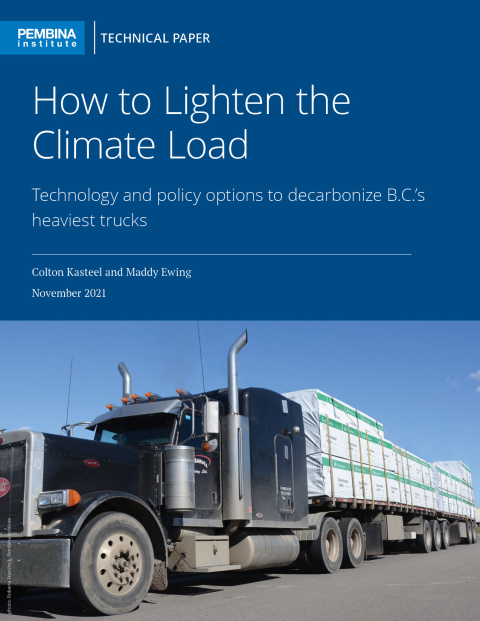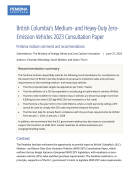Heavy-duty vehicles (HDVs) are one of the most challenging sectors to decarbonize. Especially challenging are the heaviest of heavy trucks, those heavy-haul trucks that weigh 53,000 kg to 63,500 kg. These are the standard tractor-trailers and long combination vehicles that are some of the most energy demanding of all on-road vehicles, travelling the farthest distances and consuming the most diesel fuel.
Across Canada, according to the 2021 National Inventory Report, transportation is responsible for 25.5% of emissions. Between 2005-2019, transportation emissions increased by 16%, with freight increasing at three times the rate of passenger emissions.
In British Columbia, in 2019 transportation contributed to 39% of the province’s total GHG emissions, with HDVs standing out in the emissions profile. Despite only making up 5% of the province’s vehicle registrations, medium- and heavy-duty (MHDVs) are responsible for 35% of all transportation emissions. Heavy-haul tractor-trailers face some of the greatest challenges to decarbonization for several reasons including high energy demands, the prevalence of small businesses, and typically small profit margins. In this report, we assess the viability of emerging technology and fuel options, as well as the provincial programs and regulations that currently support the decarbonization of B.C.’s heaviest trucks and the transportation sector more broadly.
Technologies to decarbonize the heaviest trucks
A range of technologies and practices, rather than any single one, are expected to contribute to the decarbonization of B.C.’s heavy-haul sector. This includes battery electric trucks, hydrogen fuel cell electric trucks, biofuels (biodiesel and renewable diesel), natural gas, renewable natural gas, and high-efficiency diesel engines. An analysis of each alternative technology’s performance relative to a diesel baseline in the present timeframe shows that no one option meets all the needs of B.C.’s heavy-haul sector (see table below). Each presents trade-offs in terms of life cycle GHG emissions, air pollutant emissions, cost, technological maturity, charging/fuelling infrastructure availability, and more.
What remains to be determined is what the market share of each will be, and how government policy in B.C. will influence the growth, development, and adoption of these technologies in the long-term future, and the impact it will have in lightening the sector’s climate load.

Policies to rev deployment of near-zero and zero-emission technologies
While B.C. has taken several steps to decarbonize HDVs and accelerate clean transportation, more needs to be done to accelerate the availability of viable, affordable near-zero and zero-emission technologies that can meet the needs of heavy-haul trucks in the weight range of 53,000 kg to 63,500 kg. We identify 16 policy actions, in five categories, that could be taken by B.C. to support this goal (see table below). B.C. needs to bolster its long-term strategic planning and policy framework; invest in research and development, demonstration pilots, and independent testing; invest in charging and refuelling infrastructure; enhance and create new incentives to encourage adoption; and build capacity for fleet operators with the necessary skills and know-how to make the switch.








